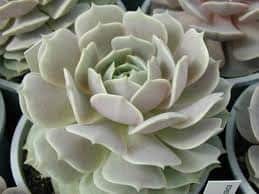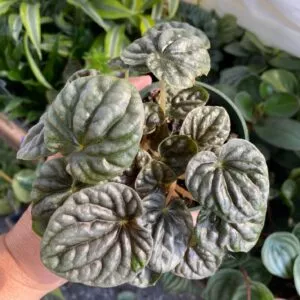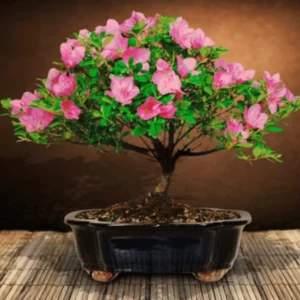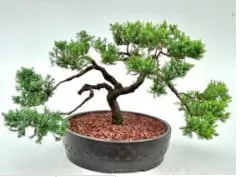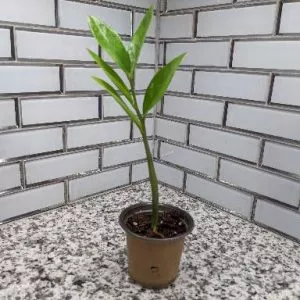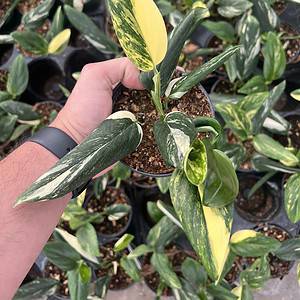No products in the cart.
Table of Contents
Calathea lancifolia, also known as the Rattlesnake Plant, is a widespread Calathea known for its striking foliage.
Its long, lance-shaped leaves feature an intricate pattern of dark green bands on a lighter green background, resembling the markings of a rattlesnake.
This evergreen perennial thrives indoors, making it a sought-after indoor houseplant for its unique beauty and easy-to-care-for nature.
More About Calathea Lancifolia
The rattlesnake plant comes from Brazil. It has slender pale foliage with dark blotches and purple undersides.
The tropical plant is also known as Geoppertia insignia or Calathea, and you must agree the striking appearance will give a tropical feel to any place.
Taking care of the houseplant is problematic to some extent. Yet, by following our care tips here, we are sure your plant will thrive. It is an evergreen perennial seasonal bloomer with yellow flowers.
The plant also barely reaches 30 inches tall, making it an ideal indoor plant for taking up little space.

Rattlesnake Plant Care
Rattlesnake Plants Soil
For your rattlesnake plant, the soil needs to drain well. While it can handle standing in water, keeping it only moist is better. You can use a soil mix of three parts compost with one part peat.
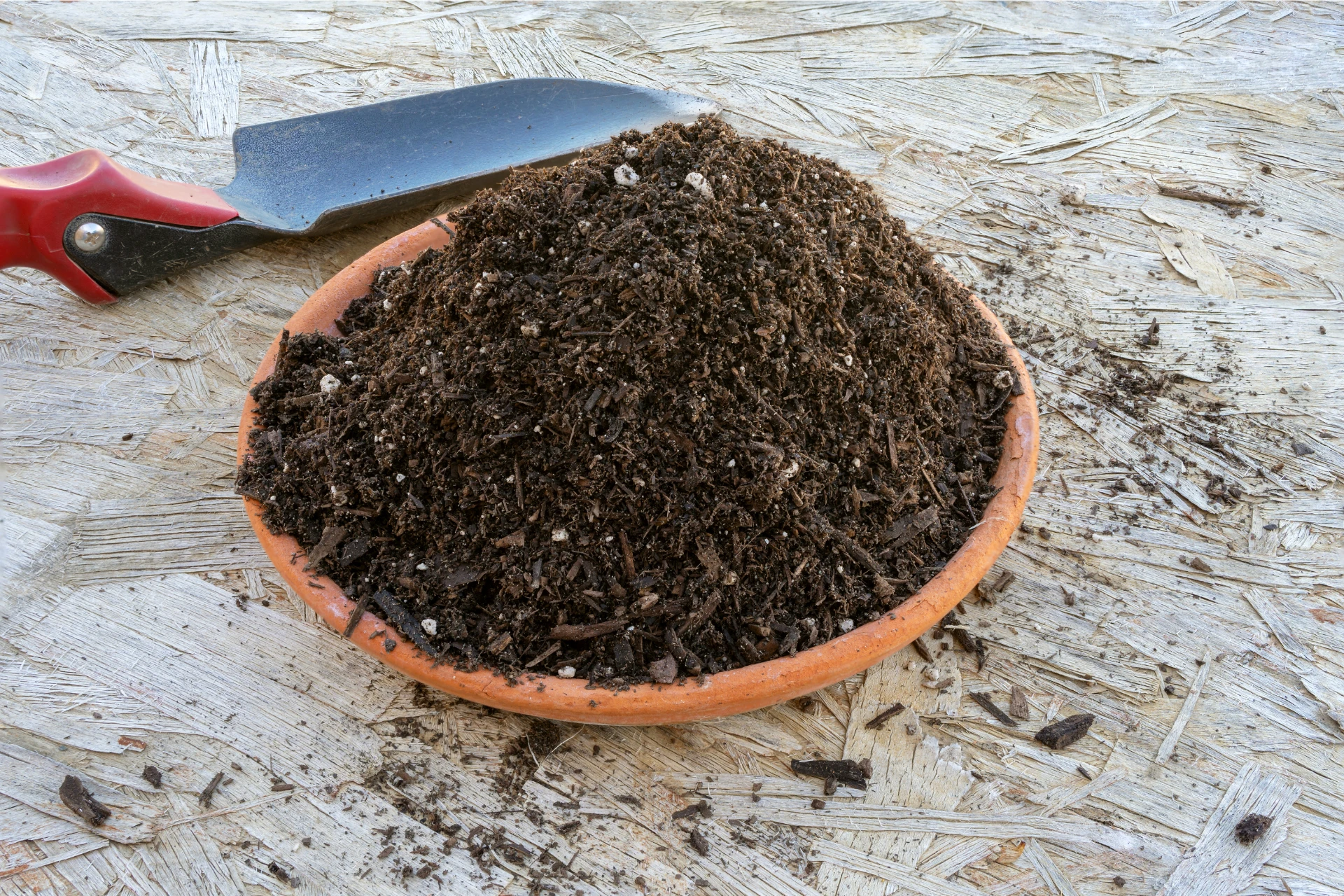
Or use one part perlite mixed with two parts peat moss instead. The great news is that it thrives in acidic to neutral pH regarding rattlesnake plant care.
But where possible, stay clear of alkaline soil. Calatheas do not enjoy growing in too much alkaline soil.
-
$7.99 – $9.99Sold By: Succulent Oasis
In stock
Echeveria ‘Lola’ Succulent | Beautiful Rosette in Shades of Pale Green and Lavender
Rated 4.84 out of 5 based on 352 customer ratings05Sold By: Succulent Oasis -
$12.00Sold By: Smoot's Farm
In stock
Peperomia Caperata Radiator Plant Emerald Green Ripple 4 Inch Pot Live Plant
Rated 4.89 out of 5 based on 27 customer ratings00Sold By: Smoot's Farm -
Free Shipping$193.17Sold By: BONSAI WORLD LLC
In stock
Pink flowering Medium azalea bonsai tree
Sold By: BONSAI WORLD LLC -
Free Shipping$750.09Sold By: BONSAI WORLD LLC
Only 1 left in stock
Juniper Bonsai Tree – Trained (juniper procumbens nana)
Sold By: BONSAI WORLD LLC
Watering Tips
Great, now you have your soil in the pot and your plant nestled inside, it is time to water it. During the growing season of spring and summer, you need to water your rattlesnake plants regularly to keep the soil moist.
When winter arrives, let the top layer of the potting mix get dry between watering. One thing your rattlesnake plant cannot handle is a wet condition, as it leads to root rot. When the leaves turn brown, it indicates that your plant needs watering. So do some frequent watering compared to deep irrigation.
You can do this by watering it until you see the water trickle out of the drainage holes. Yet, not in a fast stream and never leave it standing in water. Instead, throw the excess water down the drain. Oh yes, where possible, water with rainwater or distilled water and prevent using tap water.
If you have no choice, we recommend leaving the tap water standing for 24 hours, allowing the chemicals to evaporate.
Lighting Essentials
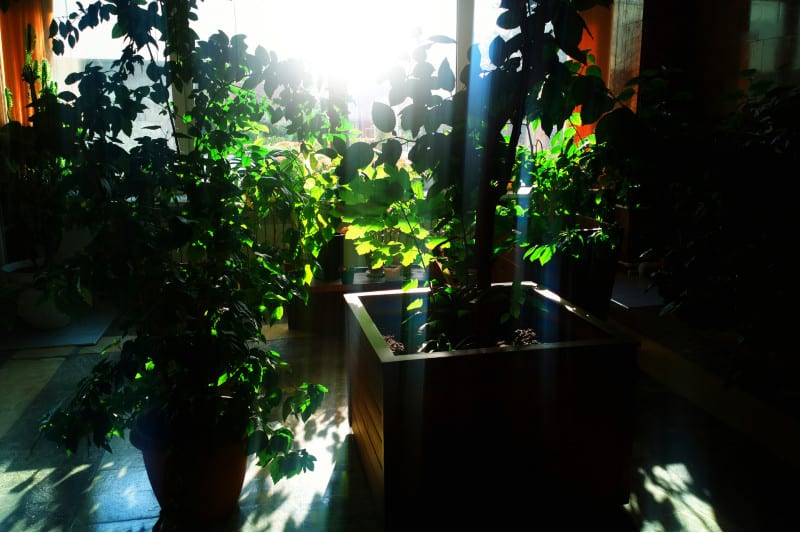
The lancifolia is not a direct sunlight fan and prefers shady garden spots. If your plant has crispy brown leaves, it might get too much sunlight. Placed in filtered light is your best option for this plant.
If you cannot grow your rattlesnake plant outside, it helps to put a window with filtered light. The best lighting conditions are intense afternoon light with drapes to diffuse the light.
Temperature
Rattlesnake plants do not tolerate sudden temperature changes; the best temperatures are between 65° to 80 °F (18-26 °C). Setting the correct temperature helps this plant grow gorgeous green leaves.
When sudden temperature changes occur, it can affect the growth of your plants. A courteous note, though, never use leaf shine on the leaves as it can lead to the foliage dying.
Do not leave your plant close to a draft, AC, or heating system, leading to dry air where possible.
Humidity Condition
Your rattlesnake plant thrives in high humidity. So you can place it on a tray with pebbles covered with water just to the pebble line. You can give it a misting or put it in your bathroom, where humidity levels are high.
Fertilizer
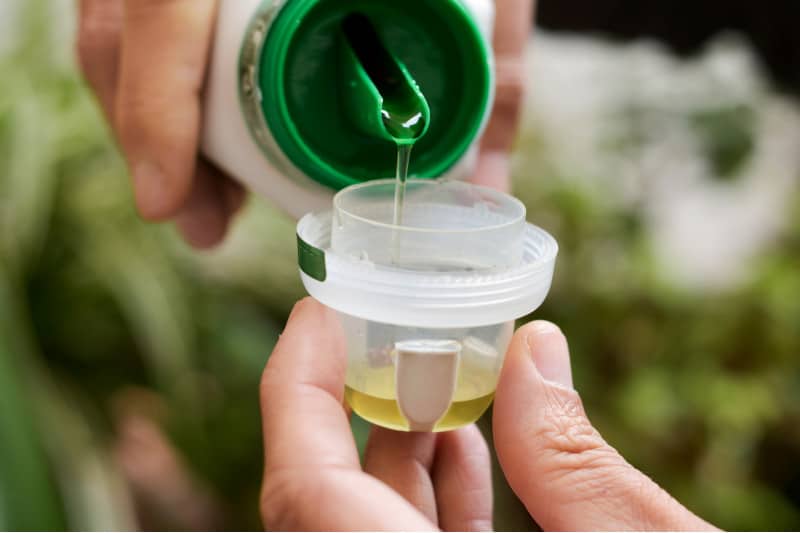
When it comes to rattlesnake plant care, it appreciates feeding every month in spring and summer. We recommend using a liquid fertilizer for the foliage to develop and thrive. Choose one with a decent nitrogen level as it works for most plants with many leaves.
Plant Propagation
There are two methods you can use to propagate calathea lancifolia, through cuttings or division.
Propagation Through Division
This method is the easiest to use to create new growth.
- The best is to water your plant and ensure that it is damp.
- Loosen up the ground and remove your plant.
- Divide the roots into two or three sections.
- Set it aside and plant them into two different mediums using fresh soil.
- Water your plant as described and mist it daily, depending on the humidity.
-
$12.99Sold By: Succulent Oasis
In stock
Medium Sedum Aurora also known as Jelly Beans
Rated 4.84 out of 5 based on 352 customer ratings00Sold By: Succulent Oasis -
$4.99Sold By: Plants by Stinky Boo
In stock
Graptoveria ‘Amethorum’
Rated 5.00 out of 5 based on 2 customer ratings00Sold By: Plants by Stinky Boo -
$15.00Sold By: PotHedz Plants
In stock
Alocasia Amazonica
Only 1 available and it’s in 1 people’s basketRated 4.96 out of 5 based on 106 customer ratings00Sold By: PotHedz Plants
Propagation Through Cuttings
- Take a sterile knife and cut the shoots at the base with two nodes attached.
- Fill a pot with fresh potting mix and insert several shoots into the soil.
- Place your cuttings in a bright spot and place a plastic bag over the top.
- Please provide your plant with air daily by removing and returning the bag.
- Keep the soil moist until you notice the rooting take place.
- Once rooted, you can transplant them to new pots.
USDA Growth Zone
The plant is winter hardy if you live in the USDA zones 11 to 12. You can grow it as an outdoor plant on the southern side of Hawaii, Florida, and California. In the remaining parts of the USA, it is best grown indoors. Still having flowers on the
Potting Your Rattlesnake Plant
You’ll find that transplanting it is not a big deal with the rattlesnake plant. You can do this once a year during the spring season. Still, doing the division propagation during repotting is good as it makes the process easier.
You can also choose a pot size that is more significant for your plant.
Calathea Lancifolia Varieties
You can find different Calathea varieties; choosing your favorite one is tricky. But here are some other species you may like.
Calathea orbifolia
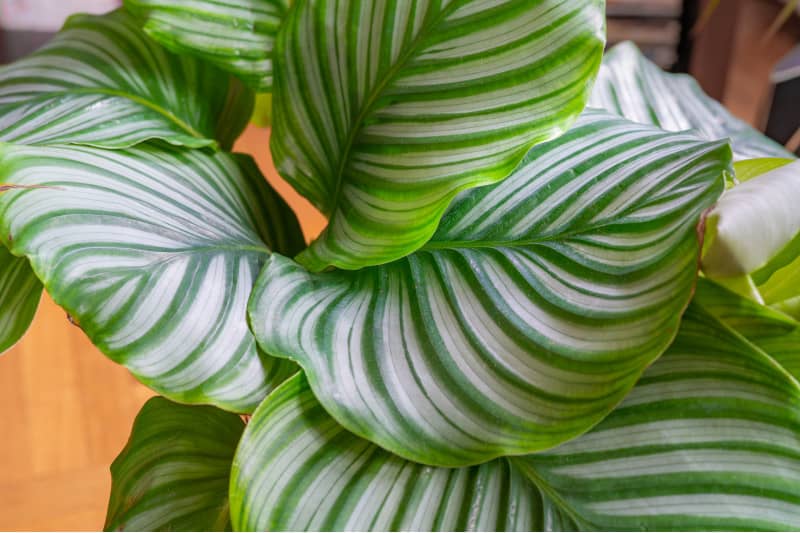
The Goeppertia orbiloia is a beauty with bright green leaves with subtle stripes. The plant is native to Brazil and can get huge. They grow up to 2.5 feet (0.76 meters) tall.
Calathea makoyana
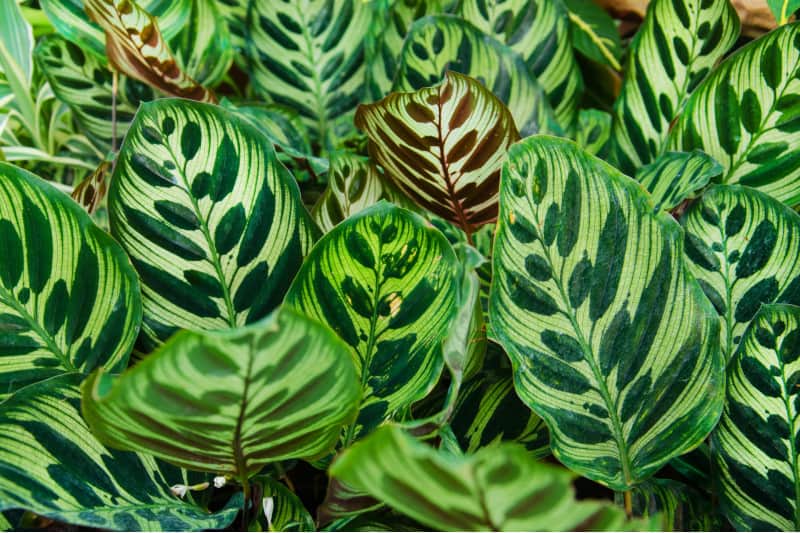
The peacock plant has a striking resemblance to the peacock’s feather. It needs to be bright but not in direct sunlight with high humidity. The watering needs are the same as for the rattlesnake plant. Where possible, provide distilled water instead of tap water.
Calathea roseopicta
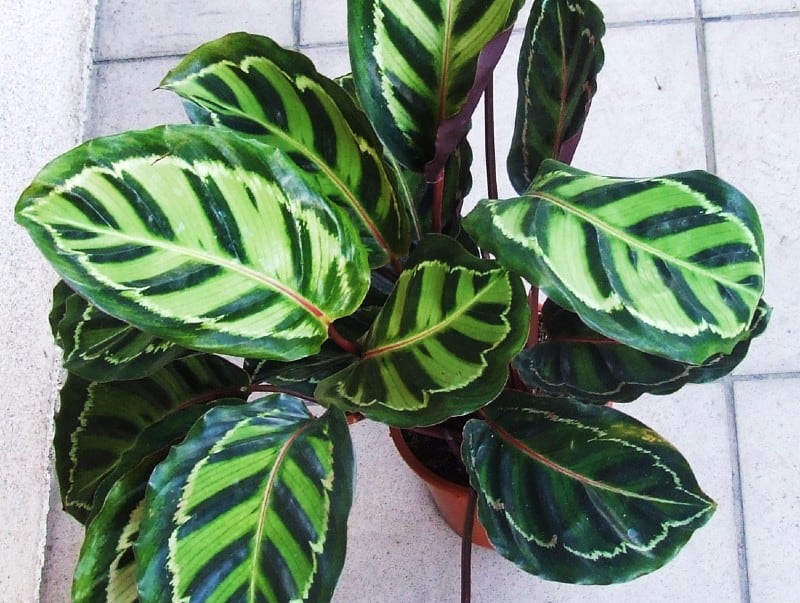
You can find many cultivars of this species available. It has striking foliage and is native to western Brazil and South America. One thing that stands out with this plant is the purple underside of the leaves.
Still, there are many more, and if you would like to find out what other Calatheas you can add to your indoor collection, ensure to read our Calathea varieties article.
Calathea Lancifolia Diseases & Pests
Your rattlesnake plant does have its problems, as most houseplants do. Here are some of the issues you may find along the way.
Brown Leaf Tips
The brown color on the leaf can result from a couple of things. It might be getting too much direct sunlight or low humidity. Another reason is the soil is too dry.
You can solve this concern using a humidifier, misting the leaves, or placing them in the kitchen or bathroom with high humidity.
New Leaves is a Light Green
The new leaves might lack iron and nitrogen if they look lighter than the older ones. You can increase the feeding with a fertilizer containing nitrogen and iron. Use an iron spray if your plant does not respond to the treatment.
Flush salts
Calatheas are sensitive to fluoride, chlorine, and salt buildup from tap water and fertilizers. The white, crusty substances on potted plants’ soil surfaces, both indoors and outdoors, are accumulations of soluble salts that can harm the plants.
To maintain a healthier plant, flush the soil once a year by slowly pouring room-temperature distilled water over it, allowing it to drain through the holes.
Frequently Asked Questions
The key to healthy rattlesnake plant care is providing proper light. When too much sunlight is present, green spots appear on the foliage. In contrast, too little daylight fades the vibrant marking. The best place is to provide your indoor plant with indirect light, which applies to the garden.
While the rattlesnake plant thrives in moisture, it does not tolerate overwatering, which can be the number one cause for your houseplants to look limp. Too much humidity leads to root and crown rot. It can happen during winter when temperatures drop and you give your plant too much water. You can move your plant into a warm spot in indirect light and ensure the medium has enough drainage.
t is a sign your houseplants need more humidity, and it can also be a lack of moisture in the air. A tip is to add a humidifier or group your houseplants together.
The best tip is to provide your rattlesnake plant with bright indirect light, water when the soil is dry, and ensure it has enough humidity indoors or in the garden. Ensure it remains warm and the container has ample drainage, as these plants do not like cold and fluctuating temperatures.
While pruning is unnecessary, it can help remove damaged or dead leaves to help encourage new growth.
At night the leaves of the rattlesnake plant tend to point upwards and will drop back down when daylight arrives. These plants are referred to as prayer plants, and it does this to manage their light and water resources. It makes for an ideal houseplant that only reaches 30 inches tall, and repotting is not needed often. The best part of this tropical plant is that it is non-toxic and safe around the home.
The only thing about the two tropical plants is that they both belong to the Marantaceae family and have bright patterns on the leaves, with the leaves moving at night. Still, the Calathea grows upright, and prayer plants dangle or hang more from a pot while the leaf shape is also different.
Whether you want to buy, sell, or simply reach out to other plant enthusiasts, Plantly is the right place to be!
-
$15.00Sold By: Juan's Grow Garden
In stock
Zamioculcas ZZ plant – 3.5 inch pot
Rated 5.00 out of 5 based on 12 customer ratings00Sold By: Juan's Grow Garden -
-
Free Shipping$394.79Sold By: BONSAI WORLD LLC
In stock
Variegated Hawaiian Umbrella Bonsai Tree Root Over Rock
Only 1 available and it’s in 1 people’s basketSold By: BONSAI WORLD LLC -
$70.00Sold By: Andy Nursery
$75.00In stock
Red Finger Lime Grafted Citrus Tree. 2 Feet Tall.
Only 47 available and it’s in 1 people’s basketSold By: Andy Nursery
